A Field Guide to Forester’s Tools
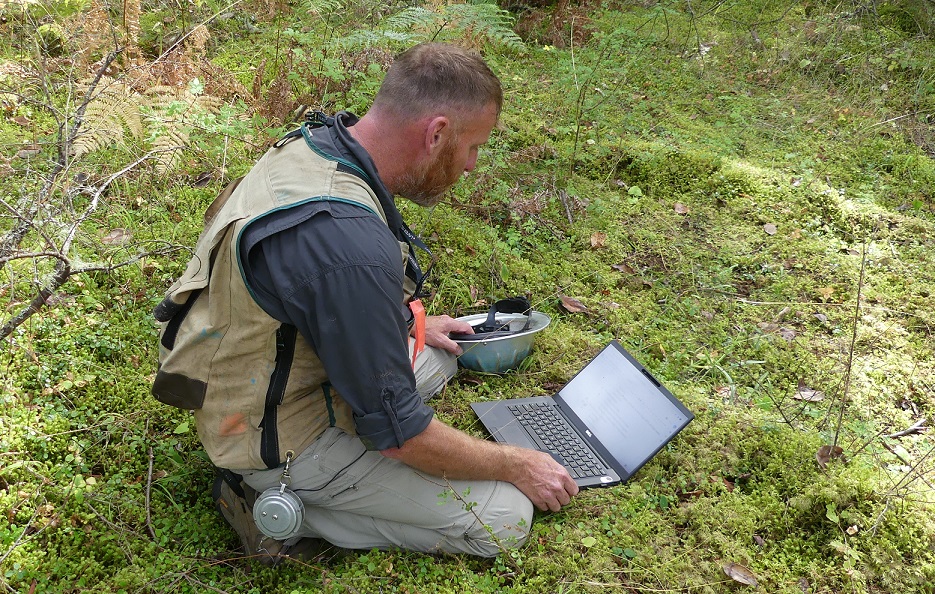
A forester walks into the woods carrying diameter tape, an increment borer, and a GPS…
No, it’s not the opening to a joke or a riddle — it’s the start of a typical workday in the field for an NNRG foresters, who never leave home without a few important pieces of forestry gear. Several of these items are readily accessible at your local forestry and farm suppliers and could be gear staples for landowners who monitor or inventory their forest.
Read on to learn a bit more about what our foresters are carrying around while they’re working in the woods — and whether any of these tools might be a useful addition to your stewardship forest toolbox.
A forester walks into the woods carrying diameter tape, an increment borer, and a GPS…
No, it’s not the opening to a joke or a riddle — it’s the start of a typical workday in the field for an NNRG forester, who never leave home without a few important pieces of forestry gear. Several of these items are readily accessible could also be gear staples for forest owners who do annual monitoring in their forest.
Read on to learn a bit more about what our foresters are carrying around while they’re working in the woods — and whether any of these tools might be a useful addition to your stewardship forest toolbox.
DIAMETER TAPE (AKA DBH-TAPE, SPENCER’S TAPE)
Foresters use diameter tape (DBH-tape, short for ‘diameter at breast height’) to estimate the diameter of a tree stem at breast height. A diameter tape looks like a measuring tape furled up in a round, usually metal case. But in addition to measuring centimeters or inches on one side, diameter tape has either metric or imperial measurements multiplied by pi (π – 3.14159…) on the other. This means the tape can measure the diameter of a tree stem – saving our foresters from having to do a bunch of elementary school math in the woods.
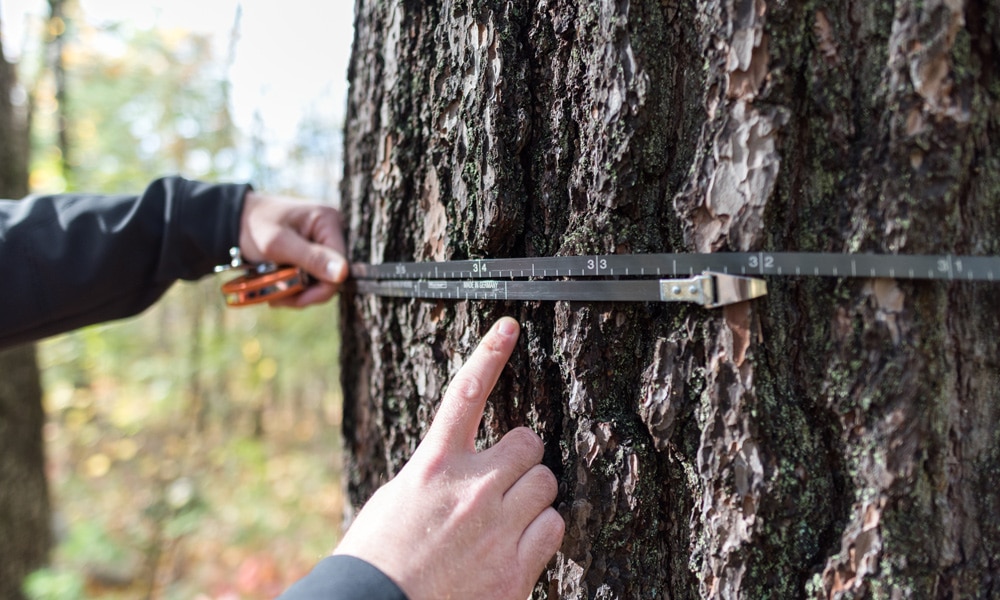
DIAMETER TAPE (AKA DBH-TAPE, SPENCER’S TAPE)
Foresters use diameter tape (DBH-tape) to estimate the diameter of a tree stem at breast height. A diameter tape looks like a measuring tape furled up in a round, usually metal case. But in addition to measuring centimeters or inches on one side, diameter tape has either metric or imperial measurements multiplied by pi (π – 3.14159…) on the other. This means the tape can measure the diameter of a tree stem – saving our foresters from having to do a bunch of elementary school math in the woods.

https://www.youtube.com/watch?v=DFP-oD31XnU
A Note About Diameter Tape
In addition to being one of the oft-used items in a forester’s toolkit, it’s also the one that manages to slip away most frequently. The forest tends to claim diameter tape for its own at least a few times in a forester’s career. But NNRG Forester Gustavo Segura-Flores is unusual in that respect — he’s reclaimed not one, but two diameter tapes from the woods:
I managed to lose my tape during the summer after a field day when I was changing out shirts. When I removed my vest I accidentally unclipped the tape from my vest, and it fell on the ground. I made a mental note of where it fell while I went about my business changing. Sadly I forgot to pick it back up and took off without a second thought. The next day I showed up to the field without it and started to frantically look for it in my truck. In the middle of that work day the mental note of where the tape was dropped popped into my head and I went out to the site at the end of the day. Skip to a few weeks later where Jaal (NNRG Lead Forester) and I are scouting a stream. Towards the end of the day about 50 feet from the road I spotted a brief shine of something metallic under some brush. It turned out to be an old (but still very usable) tape that was previously left behind. So that’s the story of how I went from -1 tapes to +1 tapes within about a month.
A Note About Diameter Tape
In addition to being one of the oft-used items in a forester’s toolkit, it’s also the one that manages to slip away most frequently. The forest tends to claim diameter tape for its own at least a few times in a forester’s career. But NNRG Forester Gustavo Segura-Flores is unusual in that respect — he’s reclaimed not one, but two diameter tapes from the woods:
I managed to lose my tape during the summer after a field day when I was changing out shirts. When I removed my vest I accidentally unclipped the tape from my vest, and it fell on the ground. I made a mental note of where it fell while I went about my business changing. Sadly I forgot to pick it back up and took off without a second thought. The next day I showed up to the field without it and started to frantically look for it in my truck. In the middle of that work day the mental note of where the tape was dropped popped into my head and I went out to the site at the end of the day. Skip to a few weeks later where Jaal (NNRG Lead Forester) and I are scouting a stream. Towards the end of the day about 50 feet from the road I spotted a brief shine of something metallic under some brush. It turned out to be an old (but still very usable) tape that was previously left behind. So that’s the story of how I went from -1 tapes to +1 tapes within about a month.
INCREMENT BORER
An increment borer is a specialized tool used in dendrochronology – tree aging. An increment borer extracts a section of wood tissue from a living tree, so that the user can count the rings in the core sample to reveal the age of the tree. Other growth characteristics of the trees environment, like past fire and drought history, can also be seen in a tree core. The increment borer itself is made up of a handle, a hollow auger bit and a small, half circular metal tray (the core extractor) that fits into the auger bit. These three parts can be separated before and after use, making them easier to lug around the woods.
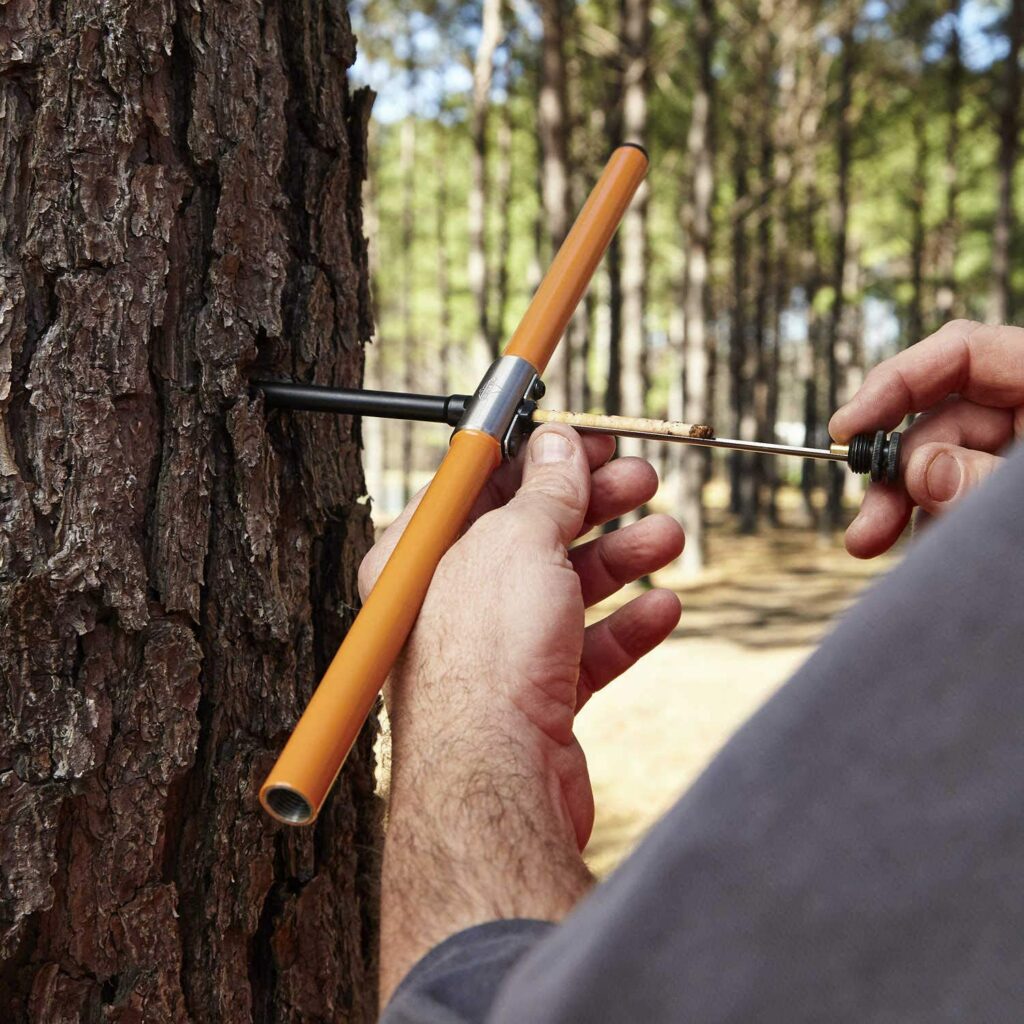
INCREMENT BORER
An increment borer is a specialized tool used in dendrochronology – tree aging. An increment borer extracts a section of wood tissue from a living tree, so that the user can count the rings in the core sample to reveal the age of the tree. Other growth characteristics of the trees environment, like past fire and drought history, can also be seen in a tree core. The increment borer itself is made up of a handle, a hollow auger bit and a small, half circular metal tray (the core extractor) that fits into the auger bit. These three parts can be separated before and after use, making them easier to lug around the woods.

LASER RANGEFINDER/HYPSOMETER
Laser rangefinders/hypsometers are kind of a 3-in-1 tool that foresters use to measure distances, angles, and heights. They look a bit like sideways binoculars with an LCD screen on the side. The screen displays live measurement information. By looking through the viewfinder and pointing the rangefinder’s laser at various points spots on a tree, the rangefinder can calculate the heights of trees near and far using basic trigonometry.
Many rangefinders have both a 2-point or a 3-point measurement mode. The 2-point mode, also known as vertical measurement, is used to measure tree height when both the top and the base of the tree can be seen in the viewfinder at the same time. The 3-point mode is used to measure tree height when the top and base of the tree cannot be seen at the same time in the viewfinder. The first measurement is the distance to the tree. The second measurement is the angle to the top of the tree, and the third measurement is the angle to the base of the stem.
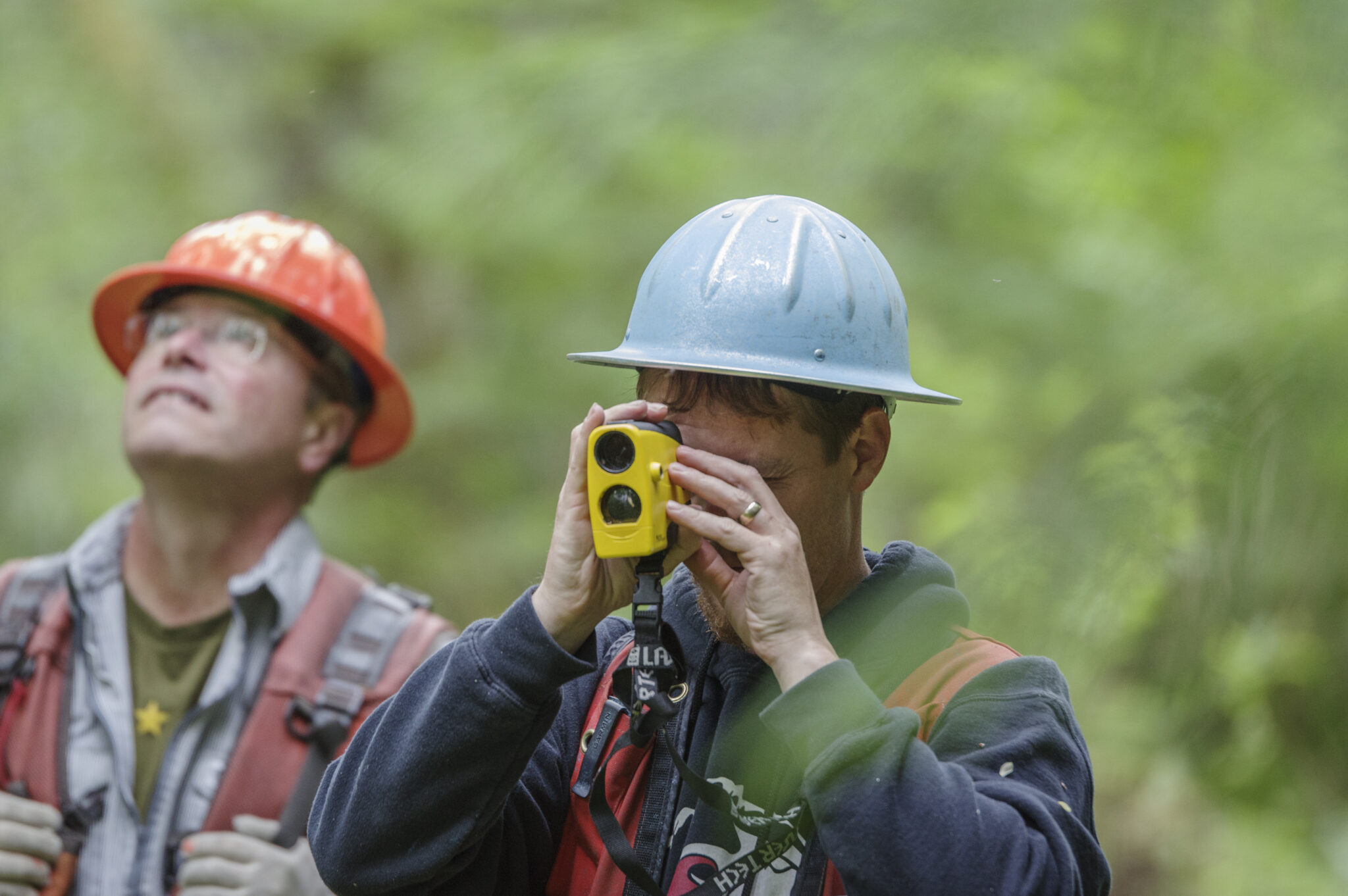
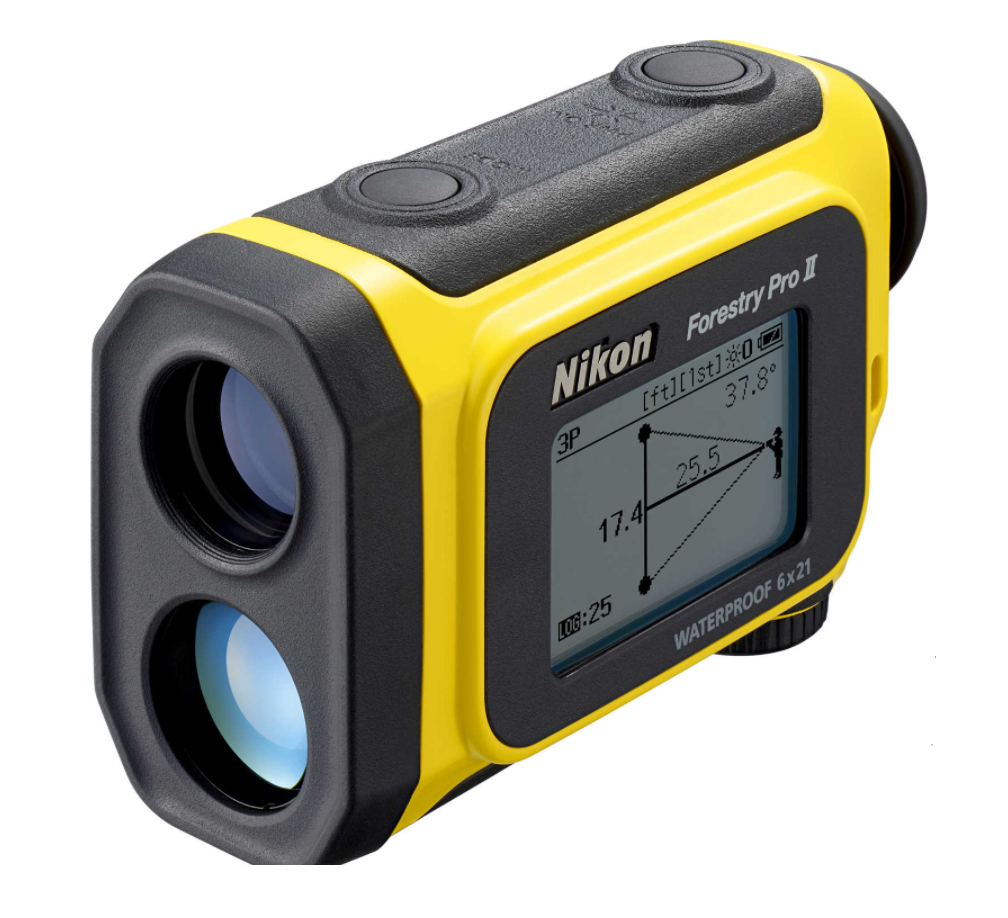
LASER RANGEFINDER/HYPSOMETER
Laser rangefinders/hypsometers are kind of a 3-in-1 tool that foresters use to measure distances, angles, and heights. They look a bit like sideways binoculars with an LCD screen on the side. The screen displays live measurement information. By looking through the viewfinder and pointing the rangefinder’s laser at various points spots on a tree, the rangefinder can calculate the heights of trees near and far using basic trigonometry.
Many rangefinders have both a 2-point or a 3-point measurement mode. The 2-point mode, also known as vertical measurement, is used to measure tree height when both the top and the base of the tree can be seen in the viewfinder at the same time. The 3-point mode is used to measure tree height when the top and base of the tree cannot be seen at the same time in the viewfinder. The first measurement is the distance to the tree. The second measurement is the angle to the top of the tree, and the third measurement is the angle to the base of the stem.


CLINOMETER APP
Since rangefinders / hypsometers can cost hundreds of dollars, a more affordable option for measuring tree heights is using a clinometer app on your phone, and some simple math.
NNRG Director of Forestry Kirk Hanson uses the “Clinometer + Bubble Level” app, which is available for iPhones and Androids, but any clinometer or spirit level app will do.
The three (well, technically four) measurements you will need are the horizontal distance from you to the tree, angle from your eyes to the top of the tree, the angle from your eyes to the base of the stem, and the height of your eyes above ground.
After you’ve taken the measurements, a simple tangent equation will get you the tree height. Click here for step-by-step instructions and the mathematical formula.
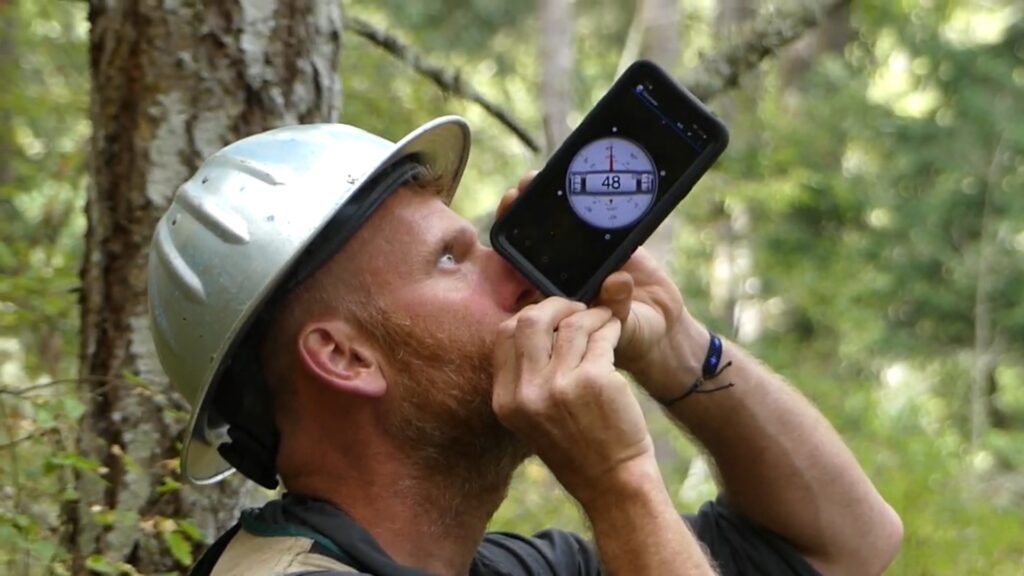

CLINOMETER APP
Since rangefinders / hypsometers can cost hundreds of dollars, a more affordable option for measuring tree heights is using a clinometer app on your phone, and some simple math.
NNRG Director of Forestry Kirk Hanson uses the “Clinometer + Bubble Level” app, which is available for iPhones and Androids, but any clinometer or spirit level app will do.
The three (well, technically four) measurements you will need are the horizontal distance from you to the tree, angle from your eyes to the top of the tree, the angle from your eyes to the base of the stem, and the height of your eyes above ground.
After you’ve taken the measurements, a simple tangent equation will get you the tree height. Click here for step-by-step instructions and the mathematical formula.


GPS DEVICE
Foresters use GPS devices for a wide range of activities, but most often they’re used to mark the location of features in a forest stand or plot, including plot centers and corners, and significant features like streams, snags, ridges, invasive species, rare species, dense areas, clearings, etc. Phone apps like Avenza function as GPS devices and also allow foresters to digitally collect stand data in areas without cell reception.
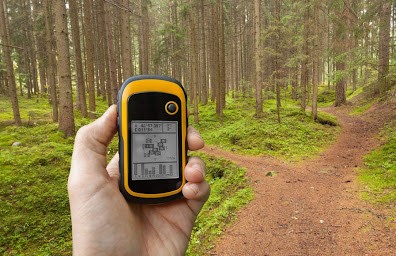
GPS DEVICE
Foresters use GPS devices for a wide range of activities, but most often they’re used to mark the location of features in a forest stand or plot, including plot centers and corners, and significant features like streams, snags, ridges, invasive species, rare species, dense areas, clearings, etc. Phone apps like Avenza function as GPS devices and also allow foresters to digitally collect stand data in areas without cell reception.

TREE MARKING PAINT
This stuff doesn’t make it into into a forester’s kit on every visit to the field, but our foresters do use it before harvests to mark trees that should be cut. Tree marking paint comes in a few different forms; NNRG’s foresters use spray cans and paint guns (pictured right). Often a forester will mark the stem once at breast height, so that a logger coming through with harvesting equipment can see it, and once on the base of the stem, so that the forester can confirm after the harvest that the right trees have been cut.
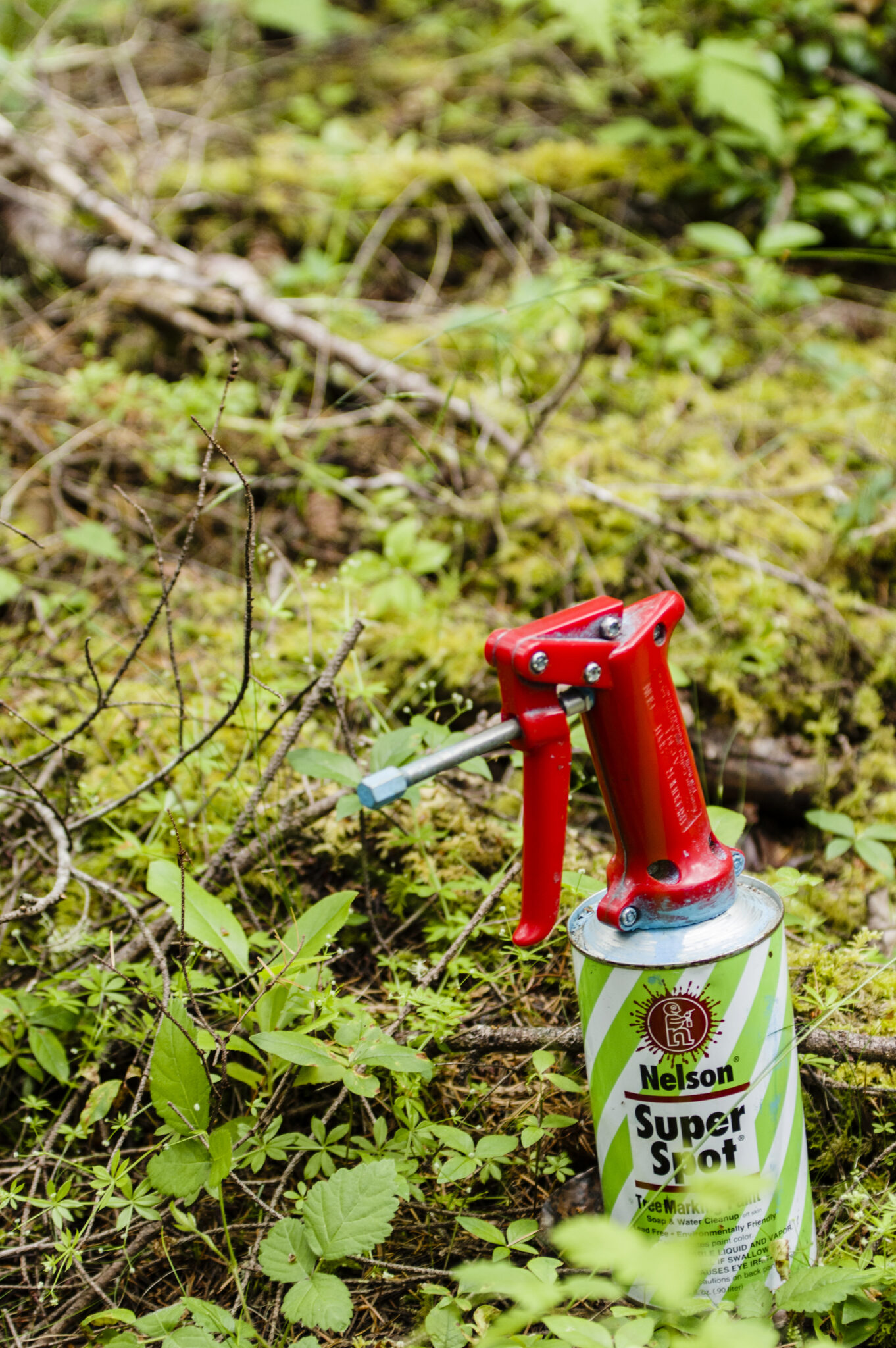
TREE MARKING PAINT
This stuff doesn’t make it into into a forester’s kit on every visit to the field, but our foresters do use it before harvests to mark trees that should be cut. Tree marking paint comes in a few different forms; NNRG’s foresters use spray cans and paint guns (pictured right). Often a forester will mark the stem once at breast height, so that a logger coming through with harvesting equipment can see it, and once on the base of the stem, so that the forester can confirm after the harvest that the right trees have been cut.

CRUZ-ALL / ANGLE GAUGE
This handy little tool is used to estimate the average basal area within a give area. Basal area is the cross-sectional area of trees at breast height.
The tool consists of a metal die-cut gauge and a 25″ beaded chain. Each of the openings in the gauge represent a different basal area factor, usually including 5, 10, 20, and 40.

CRUZ-ALL / ANGLE GAUGE
This handy little tool is used to estimate the average basal area within a give area. Basal area is the cross-sectional area of trees at breast height.
The tool consists of a metal die-cut gauge and a 25″ beaded chain. Each of the openings in the gauge represent a different basal area factor, usually including 5, 10, 20, and 40.

WATER-RESISTANT NOTEBOOK
A waterproof notebook is an essential piece of gear for any forester or forest steward conducting regular monitoring or an inventory of their woods. Rite-in-the-Rain is one of the most popular brands used by NNRG foresters, though there are plenty of others.

WATER-RESISTANT NOTEBOOK
A waterproof notebook is an essential piece of gear for any forester or forest steward conducting regular monitoring or an inventory of their woods. Rite-in-the-Rain is one of the most popular brands used by NNRG foresters, though there are plenty of others.

CRUISER VEST
All of the aforementioned items probably fit in an average-sized backpack, but most NNRG foresters prefer to wear a cruiser vest. Cruiser vests, often designed in a high-visibility orange or yellow, are jam-packed with pockets and loops that can hold or hang all of the above gear items. Some cruiser vests include a large, backpack-like pocket that stretches across the entire back of the vest – big enough to fit anyone’s lunch.
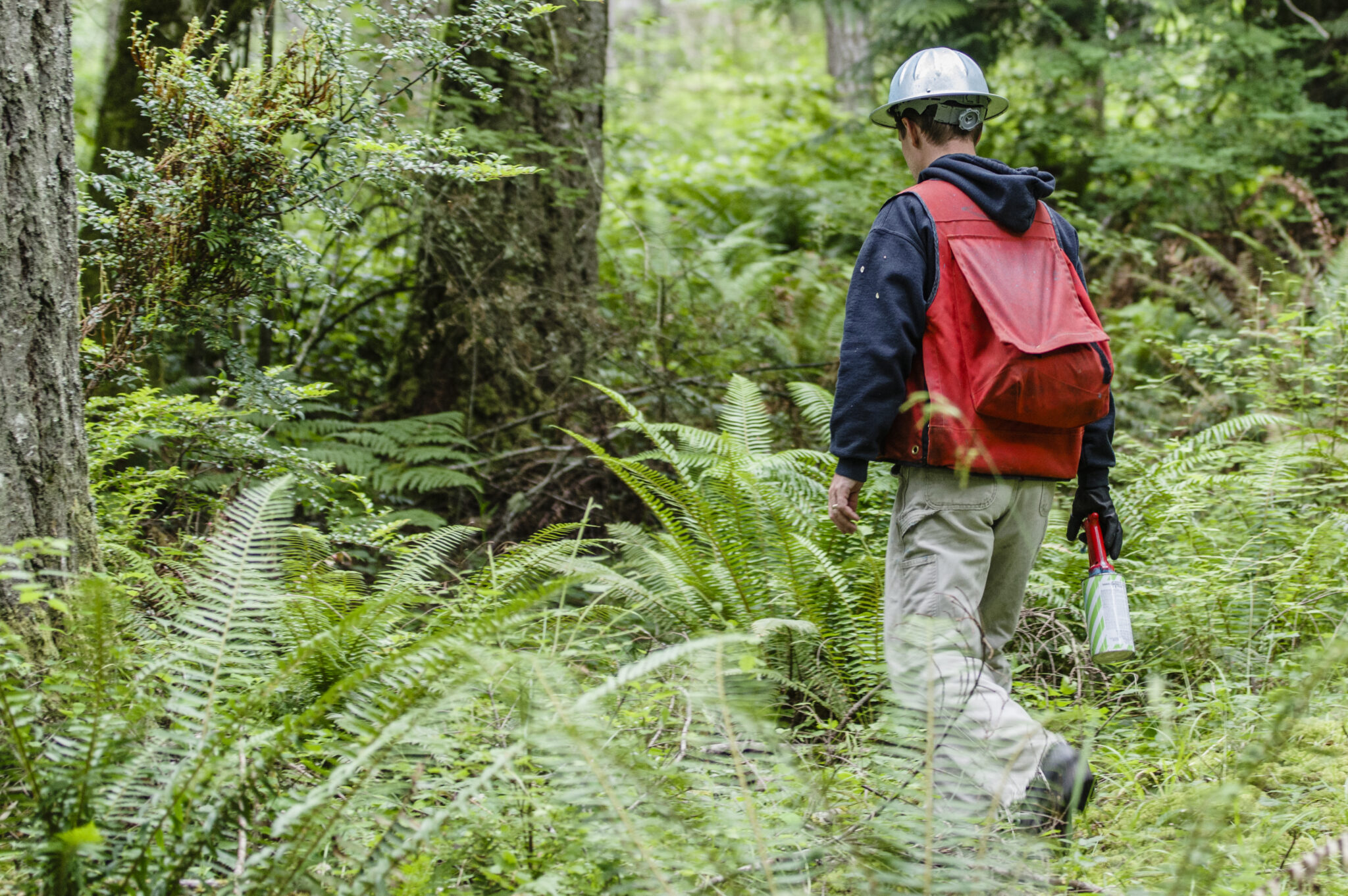

CRUISER VEST
All of the aforementioned items probably fit in an average-sized backpack, but most NNRG foresters prefer to wear a cruiser vest. Cruiser vests, often designed in a high-visibility orange or yellow, are jam-packed with pockets and loops that can hold or hang all of the above gear items. Some cruiser vests include a large, backpack-like pocket that stretches across the entire back of the vest – big enough to fit anyone’s lunch.



2 Comments
Thanks for linking to my forestry and environmental blog, and for sharing a really clear explanation of tools and equipment carried by foresters. I wrote about the Pacific northwest forests in my biographical novel Green Gold. It follows the extraordinary true story of plant hunter John Jeffrey who travelled through the region in the early 1850s in the footsteps of David Douglas. One day I hope to visit your beautiful forests.
(Personal message: If you’d welcome a guest blog about the exploits of John Jeffrey, feel free to ask.)
this is cool 🙂